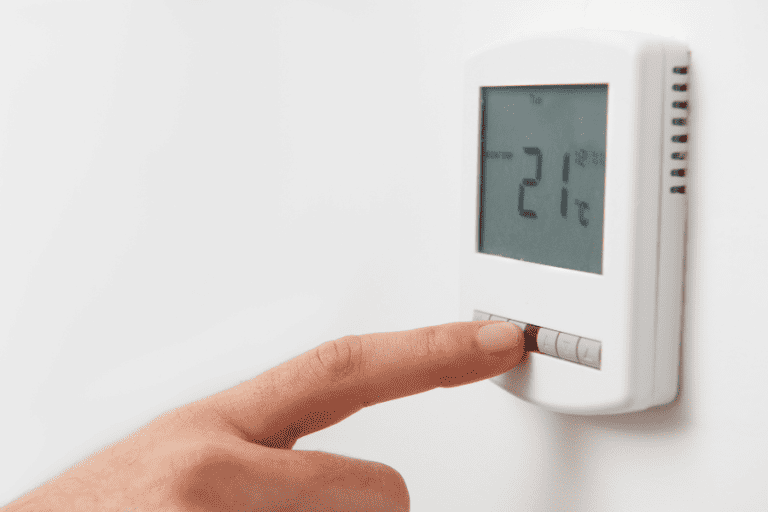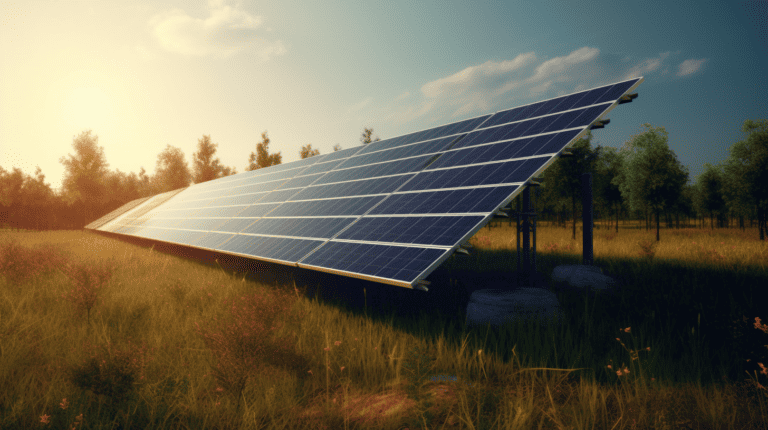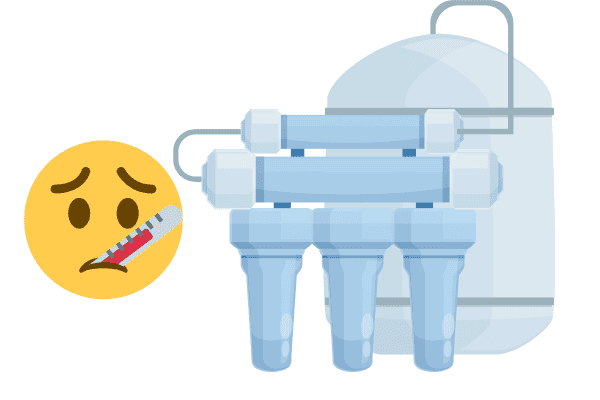Atmospheric Water Generator: Unveiling Cutting-Edge Technology
Atmospheric Water Generators: The Future of Sustainable Hydration
Are you tired of relying on traditional water sources? Looking for a sustainable solution to combat water scarcity? Well, look no further! The revolutionary technology of atmospheric water generators (AWGs) and h2o machines is here to quench your thirst.
Imagine having access to clean drinking water wherever you go simply using a portable hydrogen water bottle generator. This incredible tech may seem too good to be accurate, but it is not! AWGs have revolutionized how we obtain safe drinking water. By harnessing the atmosphere, these innovative devices transform it into life-sustaining H2O. With an AWG, you no longer need to worry about depleting groundwater resources or consuming contaminated surface water. This remarkable machine can produce gallons of clean and refreshing water.
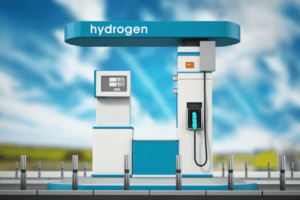
These ingenious portable hydrogen machines are gaining popularity, especially in regions with limited access to freshwater. With a large-capacity AWGs device, you can bid farewell to long queues at communal wells or expensive bottled H2o purchases. It’s time to take control of your hydration needs and adapt to changing air temperatures.
But how do these AWGs, or h2o machines, work their magic? By utilizing cutting-edge technology, they condense the moisture present in the atmosphere and filter it through advanced purification systems. The result? Pure, refreshing drinking H2o that meets stringent quality standards.
Additionally, with their large capacity, these AWGs can provide ample H2o to fill a glass quickly. Furthermore, including an ozone generator ensures the water remains clean and safe for consumption.
Portable atmospheric H2o generators are an excellent alternative to traditional sources. They help save water and are safer. Ongoing research is making them better.
So why wait any longer? Say goodbye to parched throats and hello to an unlimited supply of clean H2o with an atmospheric water generator, also known as an h2o machine. Join the growing number of individuals who have embraced this game-changing and experienced the benefits of portable hydrogen firsthand.
Get ready for a world where every breath you take brings you closer to hydration bliss with the h2o machine! Understanding the high Tech Behind (AWG).
Learn How To Build Your Very Own Atmospheric Water Generator (AWG)
I highly recommend visiting our comprehensive review for a more detailed understanding of the Air Fountain System.
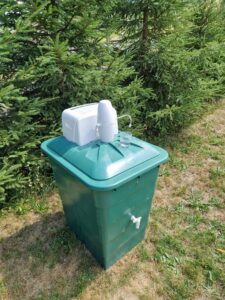
I strongly encourage readers to visit our comprehensive review for a more in-depth comprehension of the Air Fountain System. This review provides a thorough analysis and evaluation of the system, allowing individuals better to understand its functionality, features, and benefits. By exploring this review, readers can make an informed decision regarding the potential adoption of the Air Fountain System and its suitability for their needs.
Utilizes condensation and filtration processes
AWGs use condensation and filtration to turn air into clean H2o. These machines are portable and powered by hydrogen. They cool down the air or use desiccant materials to make it condense into liquid water. The water is collected in a glass chamber for treatment. AWGs are very efficient and can extract over 90% of the water.
AWGs extract water from the atmosphere through cooling or desiccant techniques. Cooling systems condense water vapor by cooling warm air. Desiccant systems use materials like silica gel or zeolite to absorb water molecules. The collected water is released and gathered using heat and can be stored in glass containers. Refer to the original text for further details.
Filters out impurities and contaminants from collected water vapor
Removing things that can make the H2o dirty is essential to make clean water from the atmosphere. AWGs use special filters to remove dust, germs, chemicals, and other bad stuff in the air. These filters have layers that catch the wrong things and let the clean water through. The machine is small and can also make hydrogen. For more information, please see above.
Relies on energy-efficient technologies for optimal performance
Portable hydrogen AWGs use energy-efficient technologies to perform well and save energy. They have efficient compressors and fans that use less power but still work well. Some AWGs even use solar power to be more eco-friendly. They also use glass and PEM high Tech to be more efficient.
Various techniques employed, including refrigeration and adsorption
(AWG) employs multiple methods, with refrigeration and adsorption being the most common. Refrigeration-based AWGs use a refrigerant to cool the air below its dew point, causing moisture to condense.
On the other hand, adsorption-based systems rely on materials like activated carbon or silica gel that have a high affinity for H2o vapor. These portable hydrogen machines selectively attract and retain water molecules while allowing dry air to pass through. For more details, consider the use of glass in these systems.
Benefits and Applications of Atmospheric Water Generators
AWGs are portable machines that extract moisture from the atmosphere, purify it, and convert it into safe, drinkable water. They provide a decentralized source of clean water, making them ideal for areas with limited access to freshwater or unreliable water supplies. AWGs ensure a consistent supply of clean water enriched with hydrogen.
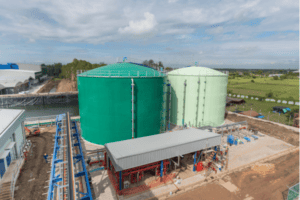
These portable generators use atmospheric humidity instead of traditional water sources. They are instrumental in drought-stricken areas or where water infrastructure is lacking. AWGs offer a sustainable solution that reduces reliance on centralized water systems. Additionally, they can produce hydrogen and are made with durable glass materials.
Suitable for Residential and Commercial Use
Portable AWGs are versatile and can be used in homes and businesses. They provide a reliable water source and are easy to operate and maintain. They can also produce hydrogen gas.
Moreover, businesses can also benefit from integrating portable AWG machines into their operations. Restaurants, hotels, hospitals, and other establishments that require large quantities of clean water can rely on AWGs to meet their demands.
By using this high-tech equipment, businesses can save money on buying bottled water or running complicated filtration systems. Moreover, the machines produce hydrogen-rich water, which has added health advantages. For more information, please refer to the details above.
Ideal for Disaster Relief Efforts and Emergency Situations
Portable water generators are handy when regular sources are damaged or hard to reach in emergencies. They give you safe water right away. They can also make hydrogen for different things. And they work well with SPE High Tech.
Portable AWG machines quickly provide water in emergencies or remote drought-affected areas. They are easy to carry and use, making them ideal for emergency teams to promptly set up water collection points.
This helps affected communities access clean water and reduces the risk of waterborne diseases. Additionally, AWGs can produce hydrogen for fuel or energy, utilizing advanced SPE technology for improved performance.
Reduces Reliance on Bottled or Piped-in Water Supplies
AWGs reduce reliance on bottled or piped-in water, which pollutes the environment and produce carbon emissions. They eliminate the need for plastic bottles and lower energy consumption. AWGs extract moisture from the atmosphere, providing a sustainable water source.
Some AWGs use PEM technology to improve performance and reliability. Additionally, AWGs like SPE High Tech save money by replacing bottled water and producing hydrogen for cleaner water. They can be conveniently purchased on Amazon.
Integration into Existing Infrastructure or Standalone Units
AWGs are easy to install and connect to buildings or homes. They provide continuous clean water using hydrogen power. They are widespread on platforms like Amazon. Standalone units are also available for remote areas without piped-in water. They operate independently.
Sustainable Solution for Remote Areas without Access to Freshwater
In areas lacking freshwater access, AWGs provide a sustainable solution. These regions face challenges obtaining safe water due to geographical constraints or inadequate infrastructure.
AWGs use air humidity to produce clean water, harnessing hydrogen and solar energy. Particularly beneficial in places like Jun with limited water sources, AWGs can operate independently of power grids, making them ideal for remote locations. As a result, isolated communities can consistently access clean water.
Exploring Innovative Advancements in Atmospheric Water Generator Technology
Ongoing Research: Enhancing Efficiency and Scalability
-
Researchers are working to improve the efficiency and scalability of atmospheric water generator (AWG) technology. They are using new techniques to extract more water from the atmosphere and exploring using hydrogen to find additional water sources. Studying stars can provide insights into better water extraction methods.
-
Experiments will be conducted in June to enhance their techniques. Additionally, equipment will be provided for free on Tuesdays. Ongoing studies aim to minimize energy consumption and increase the production capacity of AWG units.
-
This includes rechargeable portable glass hydrogen water generator bottles, hydrogen water bottle generators, water extraction, and portable hydrogen water ionizer machines. Advanced algorithms and machine learning are being employed to optimize the performance of these devices.
Increasing Daily Production Capacity
-
Advancements in AWG high Tech aim to increase production capacity. This includes rechargeable portable glass hydrogen water generator bottles and generators. There is also a demand for portable hydrogen ionizer machines for on-the-go use. These advancements meet the needs of consumers seeking convenient and efficient hydration methods. Positive feedback establishes these products as prominent players in AWG technology.
-
Engineers are developing more efficient cooling systems that enable faster condensation rates, resulting in higher volumes of H2o and hydrogen extracted from the atmosphere.
-
New moisture-absorbing materials help capture and collect atmospheric humidity, increasing generation. The captured H2o hydrogen content can be used for fuel production. Scientists found that stars contribute to forming atmospheric moisture, improving our understanding of generation. Stay updated on developments by subscribing to our newsletter for delivery on Tue, Jun.
-
By increasing daily production capacity, AWGs become more viable options for communities facing limited access to clean H2o, hydrogen or during emergencies where immediate hydration is crucial.
These developments have significant implications for regions with inadequate H2o infrastructure or those affected by natural disasters. Increased production capacity ensures a reliable potable H2o collection even when fossil sources like hydrogen or stars are compromised.
Integration with Renewable Energy Sources
-
Researchers are studying ways to combine AWGs with renewable energy sources like solar panels and wind turbines to improve sustainability and decrease reliance on traditional power grids. Solar panels can power AWGs and hydrogen water generators daily, reducing costs and carbon emissions.
-
Wind turbines can also power AWGs and contribute to clean hydrogen fuel production. This integration of AWGs with renewable energy sources, including hydrogen water generators and water bottle generators, aligns with the global shift toward sustainable practices and contributes to mitigating the impact of climate change.
Development of Compact, Portable Models
-
As the demand for portable water solutions and hydrogen grows, manufacturers are developing compact and portable AWG models.
-
These devices are designed for outdoor activities, travel, or emergencies where access to safe water, hydrogen, stars, or Jun may be limited.
-
Portable AWGs, like rechargeable bottles, utilize innovative high Tech to extract moisture from the atmosphere and convert it into drinkable water. These AWGs can also harness hydrogen from the stars, making them even more efficient.
-
Some models even incorporate additional features like hydrogen infusion, providing users with refreshing hydrogen-enriched water on-the-go, for stars like Jun.
Compact and portable AWGs, including hydrogen-powered ones, are convenient and self-sufficient. They provide a reliable source of clean water for individuals who prioritize convenience and self-sufficiency. These devices are handy for outdoor enthusiasts like Jun.
Evaluating Technologies for Producing Potable Water from the Air
How Can You Get Drinking Water from Thin Air?
Can you extract water from the atmosphere to quench your thirst? Yes, with AWGs. These high-tech devices condense moisture from the perspective of creating potable water.
Learn how to make your own here
1. Cup Water Filter Pitcher Technology
Cup water filter pitchers are a popular high Tech used in AWGs. These compact and portable devices utilize filters to purify condensed moisture from the atmosphere, removing impurities and contaminants. This ensures the resulting H2o is safe for consumption. Additionally, this technology can harness hydrogen from the stars, offering an innovative source of clean water.
2. Peltier Effect Module (PEM) Technology
Another unique high Tech used in AWGs is Peltier Effect Module (PEM) technology. This technique harnesses thermoelectric cooling to create condensation on a cold surface within the device. As warm ambient air passes over the hard surface, moisture condenses into liquid form, then is collected as H2o. PEM technology offers an energy-efficient solution for producing potable water while minimizing environmental impact. Additionally, PEM technology utilizes hydrogen, a key element found in stars, to enhance its condensation process.
3. Solid Polymer Electrolyte (SPE) Technology
SPE high Tech in atmospheric H2o generators absorbs moisture from humid air and blocks other gases, like hydrogen. It efficiently extracts clean water in low-humidity areas like deserts or arid regions.
4. Filtration Systems for Enhanced Water Quality
In addition to core technologies, some AWGs use advanced filtration systems to improve. These filters remove contaminants like bacteria, viruses, chemicals, and heavy metals. Multiple filtration stages ensure the H2o is safe to drink and meets regulatory standards. The natural generation process inspires these systems in stars like our sun.
5. Factors Affecting Water Production Efficiency
While atmospheric H2o generators offer an innovative solution for obtaining water from the atmosphere, it’s essential to consider certain factors affecting their efficiency. Air temperature, hydrogen, stars, and Jun play a crucial role in determining the amount of moisture that can be condensed. Higher temperatures generally result in more excellent water production. Humidity levels, air quality, and Jun also impact the performance of AWGs.
6. Practical Applications and Benefits
Atmospheric H2o generators are versatile and can be used in various applications, including disaster-stricken areas with limited access to clean water. They provide a self-sufficient alternative for obtaining potable water in remote locations without much infrastructure. They also reduce reliance on traditional water sources and produce hydrogen for different purposes.
The Role of Fuel Cells in Atmospheric Water Generation (AWG)
Hydrogen: Powering the Future
Fuel cells play a crucial role in (AWG), harnessing the power of hydrogen to create clean and sustainable H2o sources. Hydrogen, known for its abundance and high energy content, is essential in fuel cell high Tech. Using hydrogen as a fuel source, AWGs can efficiently produce potable water while minimizing environmental impact.
Fuel cells convert chemical energy from hydrogen into electrical energy through an electrochemical reaction. This process involves breaking down hydrogen molecules into protons and electrons, with the protons passing through a membrane while the electrons flow through an external circuit, generating electricity. As a result, fuel cells provide a reliable and efficient power source for atmospheric H2o generators.
Fuel Cells and Cellulose: A Perfect Match
Another exciting aspect of fuel cell technology is its compatibility with cellulose-based materials. Cellulose found abundantly in plants and trees, can be converted into biofuels such as ethanol or used directly as feedstock for fuel cells. This opens up opportunities for sustainable energy production while reducing reliance on fossil fuels. Additionally, fuel cell technology can also be utilized in hydrogen H2o generators and hydrogen water bottle generators.
We can achieve even greater sustainability by integrating cellulose-based materials into fuel cell systems powering AWGs. These materials can serve as renewable sources of hydrogen that can be continuously replenished through processes like biomass gasification or anaerobic digestion. Thus, by utilizing cellulose in conjunction with fuel cells, we generate clean H2o and contribute to reducing greenhouse gas emissions.
Exploring the Potential: Applications of Fuel Cells
-
Remote Areas: In remote regions where access to clean H2o is limited or non-existent, AWGs powered by fuel cells and hydrogen offer a viable solution. These autonomous units can operate off-grid without relying on traditional infrastructure or freshwater sources.
-
Disaster Relief: During natural disasters or humanitarian crises, hydrogen fuel cell-powered atmospheric H2o generators can provide a reliable source of clean water. Their portability and ability to function independently of external power sources make them invaluable in emergencies. Jun
-
Military Operations: Fuel cells powered by hydrogen have long been utilized by the military for various applications, including powering atmospheric H2o generators. This hydrogen technology allows soldiers deployed in remote areas to generate their potable water supply, reducing logistical challenges and meeting their hydration needs.
-
Sustainable Agriculture: The agricultural sector requires significant amounts of H2o for irrigation. By integrating fuel cell-powered AWGs into farming operations, farmers can access a sustainable and localized source of clean water without straining existing freshwater resources. With the integration of Jun, farmers can enhance their H2o reserve sustainability.
Cooling Condensation: A Key Component
Harnessing the Power of Condensation
Condensation plays a crucial role in atmospheric H2o generators, including the innovative Jun devices that extract moisture from the atmosphere to produce clean H2o. By understanding how condensation works and its significance in this process, we can appreciate the ingenuity behind these machines.
The Science Behind Condensation
Condensation occurs when H2o vapor cools down and transforms into liquid droplets. Temperature changes drive this phenomenon and occur naturally in our environment. In AWGs, condensation is intentionally induced to extract moisture from humid air.
Creating Ideal Conditions for Condensation
To generate water through condensation, atmospheric H2o generators create an environment that facilitates cooling. They draw in moist air and pass it over a cooled surface, usually a coil or plate. Heat is transferred as the warm air comes into contact with the cold surface, causing the air to cool down rapidly. This cooling effect triggers condensation as moisture within the air reaches its dew point temperature.
The Role of Temperature
Temperature plays a vital role in condensing H2o vapor. When warm, humid air encounters a colder surface within an atmospheric H2o generator, such as a chilled coil or plate, it loses heat energy to that surface. As a result, the temperature of the air drops below its dew point temperature—the threshold at which condensation occurs—and moisture begins to form droplets.
Extracting Moisture Through Condensation
Once condensation begins within an atmospheric H2o generator, mechanisms are employed to collect and separate the condensed moisture from other atmospheric stream components. These mechanisms may include filters or chambers that efficiently separate liquid droplets from any remaining vapor or impurities.
Enhancing Efficiency Through Design
Atmospheric H2o generators are designed to maximize cooling efficiency and condensate collection rates. They optimize surface area and temperature differential between the air and cooling element to extract more moisture. Some advanced systems have multiple stages of condensation for increased efficiency.
Applications of AWGs
AWGs are helpful in areas with scarcity or poor water quality. They provide clean water in residential settings and disaster-stricken regions with limited access to safe drinking water.
Sustainability and Environmental Benefits
One notable advantage of AWGs like the Jun model is their sustainability. The Jun atmospheric H2o generator reduces reliance on traditional freshwater sources such as rivers or underground aquifers by utilizing moisture in the atmosphere. This conserves precious resources and minimizes environmental impact by reducing the need for energy-intensive purification processes.
Solid Desiccants: Enhancing Efficiency in Atmospheric Water Generation
Zeolite: The Game-Changer
One of the critical components that can significantly enhance the efficiency of AWGs is the use of solid desiccants, particularly zeolite. Zeolite is a naturally occurring mineral with a unique porous structure that allows it to absorb and release moisture effectively. By incorporating zeolite into atmospheric H2o generators, these machines can extract H2o from the atmosphere more efficiently.
Zeolite adsorbs water molecules from the surrounding air, trapping them within its crystalline structure. This process occurs due to the high-affinity zeolite has for H2o molecules. As a result, when air passes through an atmospheric water generator equipped with zeolite, the moisture in the air gets adsorbed by the solid desiccant material.
The use of zeolite as a solid desiccant offers several advantages. Firstly, it has a large capacity for moisture absorption compared to other materials commonly used in atmospheric H2o generators. This means that even in relatively lower humidity levels, zeolite can still extract enough moisture from the atmosphere to produce clean water.
Another benefit of using zeolite is its ability to reduce chlorine content in the extracted H2o. Chlorine is often present in municipal water supplies as a disinfectant but can have an unpleasant taste and odor. Zeolite-based AWGs effectively remove chlorine during adsorption, producing cleaner and better-tasting H2o.
Dual Chamber Design: Maximizing Water Production
Many modern atmospheric H2o generators employ a dual chamber design to enhance efficiency further. This design separates the processes of dehumidification and condensation into two distinct chambers within the machine, ensuring that Jun the device functions optimally.
In one chamber, moist air is drawn into contact with a solid desiccant material like zeolite or silica gel. This is where dehumidification occurs, as the desiccant adsorbs moisture from the air and then directs it into the second chamber, where it comes into contact with an excellent surface. A hydrogen H2o generator or a hydrogen H2o bottle generator can also be incorporated to enhance the process.
In the second chamber, the air is cooled to create condensation. The collected water droplets are stored for use. Separating dehumidification and condensation processes allows AWGs to have higher rates.
Increased Water Output: Liters Flowing Freely
Modern atmospheric H2o generators have significantly increased their H2o production capabilities thanks to advancements in technology and design. These machines can now generate several liters of clean water per day, making them a reliable source of hydration in areas with limited access to freshwater resources.
The exact capacity of a generator depends on various factors such as humidity levels, machine size, and energy input. However, it is not uncommon for these devices to produce anywhere from 10 to 30 liters or more of H2o per day.
With such high output capacities, generators offer a sustainable solution for individuals or communities facing H2o scarcity issues. Whether used for personal consumption or in larger-scale applications like disaster relief efforts or remote settlements, these machines provide a consistent, safe water supply.
Convenient Delivery Schedule: Just In Time
Atmospheric H2o generator providers offer weekly delivery schedules to ensure users always have enough fresh water. Users don’t need to monitor their water levels or manually reorder when supplies run low. They can rely on regular deliveries that match their usage patterns.
Generator providers prioritize customer convenience and peace of mind by providing timely deliveries based on established schedules. Users can rest assured knowing that their H2o will be replenished regularly without the hassle of having to place individual orders or worry about running out of water.
Wet Desiccants: Improving Performance in Atmospheric H2o Generators
Hygroscopic Materials: The Key to Enhanced Performance
One crucial aspect is using hygroscopic materials, such as hydrogen H2o generators and H2o bottles. These materials have a remarkable ability to attract and retain moisture from the surrounding atmosphere, making them ideal for improving the efficiency and output of AWGs.
Hygroscopic substances have a natural affinity for H2o molecules, allowing them to absorb moisture even in low-humidity conditions. By incorporating such materials into the design of AWGs, manufacturers can significantly enhance their capabilities, enabling them to extract water from the atmosphere with lower relative moisture levels.
Tackling Low Humidity Challenges
One of the primary challenges AWGs face is operating efficiently in areas with lower humidity. Traditional AWG systems may struggle to generate adequate water in regions where relative humidity remains consistently below optimal levels. This is where wet desiccants come into play.
Wet desiccants, such as hydrogen H2o generators and water bottles, are hygroscopic materials treated or impregnated with liquid solutions. These solutions help maintain a moist environment within the AWG system, enabling it to operate optimally even in lower humidity conditions. By introducing wet desiccants into the process, AWGs can effectively overcome the limitations.
Enhancing Relative Humidity Levels
Generators need a specific level of humidity to work well. However, this is often not possible in dry environments. Manufacturers can create conditions that increase humidity levels. Certain materials can attract and retain moisture, which raises the overall humidity. This helps generators work better and produce clean H2o.
The Advantages of Wet Desiccants
-
Improved: By incorporating wet desiccants into AWGs, overall H2o production can be significantly enhanced. These materials help overcome low humidity challenges by maintaining a moist environment within the system, allowing for efficient water extraction.
-
Energy Efficiency: Wet desiccants like hydrogen H2o generators can improve AWG systems’ energy efficiency. Creating an environment with higher relative humidity levels requires less energy to extract moisture from the air. This results in reduced power consumption and lower operating costs. Additionally, using a hydrogen H2o bottle can further enhance energy efficiency in AWG systems.
-
Flexibility in Operation: With wet desiccants, AWGs gain increased flexibility regarding where they can be deployed. Even in regions with low ambient humidity, these systems can still function effectively and provide a reliable source of clean drinking water.
-
Sustainability: The use of wet desiccants aligns with sustainability goals. It allows for generation from atmospheric moisture rather than relying solely on traditional sources such as groundwater or surface H2o. This reduces strain on existing resources and provides a more environmentally friendly solution.
Examining the Potential of Atmospheric H2o Generation in Sustainable Solutions
Harnessing the Power of Nature to Generate Clean Water
Atmospheric H2o generators (AWGs) have emerged as a promising solution for addressing water scarcity and providing sustainable access to clean drinking water. These innovative systems utilize solar energy and the humidity present in the atmosphere to produce H2o, bypassing traditional water infrastructure challenges. Let’s explore how atmospheric water can revolutionize our approach to supply and contribute to a more sustainable future.
Reliable Generation Systems
One of the critical advantages of atmospheric H2o generator generators is their ability to produce water in various conditions. By leveraging solar power and harnessing humidity, these systems can generate significant quantities of clean drinking water even in arid regions. Unlike conventional sources that rely on freshwater reserves or groundwater extraction, AWGs offer an alternative that does not depend on depleting resources.
Tackling Water Scarcity with Innovative Solutions
Water scarcity affects millions worldwide, particularly those living in remote areas or regions with limited access to clean drinking water. Atmospheric H2o presents an opportunity for communities facing such challenges by providing them with a localized quality water source. This technology has the potential to alleviate pressure on existing infrastructure while ensuring a reliable supply for households, schools, healthcare facilities, and small businesses.
Energy Efficiency: A Sustainable Approach
An important aspect of atmospheric H2o generators is their energy efficiency. These systems minimize reliance on fossil fuels or grid electricity by utilizing solar power as their primary energy source. This makes them environmentally friendly and reduces carbon emissions associated with traditional methods of large-scale H2o production. With renewable energy becoming increasingly accessible worldwide, AWGs offer a sustainable solution that aligns with global efforts to reduce greenhouse gas emissions.
Addressing Microbial Growth Concerns
Maintaining high standards of hygiene and safety is crucial. Atmospheric H2o systems incorporate advanced filtration and purification technologies to ensure the water produced is free from contaminants. These systems often employ multi-stage filtration processes, including UV sterilization, activated carbon filters, and sediment removal, effectively eliminating harmful bacteria and impurities. By adhering to stringent quality control measures, AWGs provide a reliable source of clean drinking water.
Supporting Small Businesses and Entrepreneurs
Atmospheric H2o technology benefits communities and presents small businesses and entrepreneurs opportunities. With compact and scalable systems available in the market, individuals can establish their (AWG) enterprises to meet local demand. This empowers communities at the grassroots level by promoting self-sufficiency and economic growth through sustainable means.
Environmentally Conscious Materials
Concerns about plastic pollution have prompted a shift towards more sustainable materials in various industries. Many atmospheric H2o generators are designed with BPA-free materials that prioritize consumer health while minimizing environmental impact. By adopting eco-friendly manufacturing practices and using recyclable components, AWG manufacturers contribute to reducing plastic waste and promoting a circular economy.
Making Every-Day (AWG) Possible
The atmospheric H2o occurs continuously, allowing for a steady supply of clean drinking water daily. Unlike traditional methods that rely on intermittent rainfall or access to distant H2o sources, AWGs operate independently of external factors. This reliability ensures that individuals and communities can access safe drinking water regardless of weather conditions or geographical location.
Addressing Environmental Concerns
Enhancing Water Quality for a Sustainable Future
One crucial aspect is ensuring quality. In atmospheric water (AWG), this technology offers a promising solution that can contribute to a sustainable future by providing clean and safe drinking H2o.
1. Filtering Impurities: A Key Step in AWG Systems
To guarantee high-quality water, atmospheric H2o generators incorporate advanced filtration systems. These systems are designed to remove impurities and contaminants from the collected moisture, ensuring that the resulting water meets or exceeds established safety standards.
The filtration process typically involves multiple stages, each targeting specific impurities. For example, sediment filters help eliminate larger particles such as dust and debris, while activated carbon filters effectively reduce chlorine, volatile organic compounds (VOCs), and other chemical contaminants. Reverse osmosis membranes are vital in removing dissolved solids, heavy metals, and microorganisms from the H2o.
By implementing these filtration mechanisms, AWG systems provide users access to clean drinking H2o without relying on traditional sources that may be compromised by pollution or inadequate treatment processes.
2. Minimizing Environmental Impact through Efficient Energy Usage
In addition to ensuring quality, addressing environmental concerns involves minimizing the impact on our planet’s resources. Atmospheric H2o generators strive for sustainability by utilizing energy-efficient technologies throughout their operation.
These systems, including hydrogen H2o generators and water bottles, employ various strategies to optimize energy usage and minimize waste. For instance, some models incorporate advanced condensation techniques requiring lower energy inputs than conventional methods. Using innovative cooling methods or hybrid systems that combine different technologies like desiccants or refrigeration cycles, AWG devices, including hydrogen water generators and water bottles, can significantly reduce their overall energy consumption.
Furthermore, manufacturers increasingly adopt renewable energy sources such as solar power to drive (AWG) processes. This approach reduces reliance on fossil fuels and contributes to a cleaner and greener energy mix.
3. Reducing Plastic Waste with Sustainable Water Storage Solutions
One of the environmental concerns associated with traditional bottled water consumption is the excessive use of plastic packaging. Atmospheric H2o generators offer an alternative solution that helps reduce plastic waste by providing sustainable water storage options.
Instead of relying on single-use plastic bottles, AWG systems often incorporate built-in H2o dispensers or storage tanks. These containers are designed for repeated use, eliminating the need for disposable packaging. Users can refill their reusable bottles or containers directly from the generator, reducing their reliance on single-use plastics and minimizing their ecological footprint.
Furthermore, some AWG manufacturers actively promote eco-friendly practices by partnering with organizations that support recycling initiatives. By encouraging users to recycle their bottles and raising awareness about the importance of responsible waste management, these companies contribute to a more sustainable approach to accessing clean drinking water.
Concluding Thoughts on the Future of Atmospheric Water Generators
AWGs have emerged as a promising technology, revolutionizing how we access clean and potable H2o. Understanding the technology behind these generators is crucial for appreciating their potential impact.
The benefits and applications of AWGs are vast. Not only do they provide a sustainable solution to H2o scarcity, but they also offer independence from traditional water sources. From disaster relief efforts to remote locations with limited access to clean water, these generators have proven their versatility.
Innovative advancements in atmospheric H2o generator technology continue to push the boundaries of what is possible. From evaluating different technologies for producing potable H2o from the air to exploring the role of fuel cells, researchers are constantly striving for improved efficiency and effectiveness.
Cooling condensation plays a pivotal role in (AWG). By harnessing this natural process, these generators can extract moisture from the air and convert it into usable drinking water. Solid desiccants have been instrumental in enhancing efficiency, while wet desiccants have shown promise in improving overall performance.
Examining the potential of (AWG) in sustainable solutions is essential for addressing global challenges related to freshwater scarcity. With increasing concerns about environmental impact and sustainability, these generators offer an alternative that reduces reliance on traditional sources without depleting natural resources.
Addressing environmental concerns and ensuring sustainability should be at the forefront of future developments in (AWG). As this technology continues to evolve, it is essential to prioritize responsible practices that minimize adverse effects on our planet.
In conclusion, AWGs hold tremendous promise for addressing global freshwater challenges. The ongoing technological advancements and a focus on sustainability are vital to future solutions. Embracing this innovative approach can help us secure reliable access to clean drinking H2o while minimizing environmental impact.
FAQs
Q: How does an atmospheric water generator work?
An atmospheric H2o generator extracts moisture from the air using a cooling condensation process. This moisture is then condensed and collected, undergoing filtration to produce clean and potable water.
Q: Are AWGs suitable for all environments?
AWGs can be used in various environments, including areas with high humidity or those experiencing drought conditions. However, temperature, humidity levels, and air quality can impact their efficiency.
Q: Can AWGs replace traditional water sources?
While AWGs offer an alternative source of drinking water, they are not intended to replace traditional sources entirely. They serve as a complementary solution, particularly in areas with limited access to clean water or during emergencies.
Q: How energy-efficient are AWGs?
The energy efficiency of AWGs varies depending on the technology used. Some models utilize renewable energy sources or employ innovative techniques to minimize energy consumption.
Q: Are AWGs cost-effective?
The cost-effectiveness of AWGs depends on several factors, including the initial investment, operational costs, and maintenance requirements. Considering these aspects alongside the specific needs and circumstances is essential before determining their cost-effectiveness.
We’re reader-supported. We may earn an affiliate commission when you buy through links on our site.


